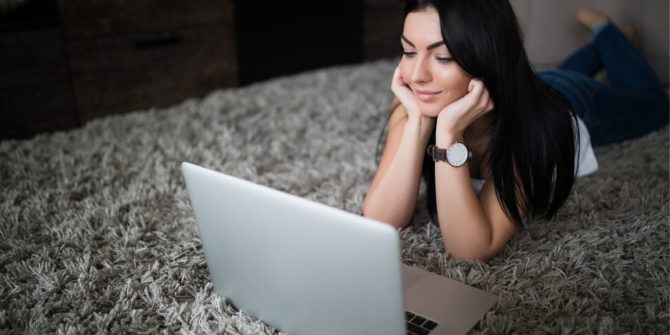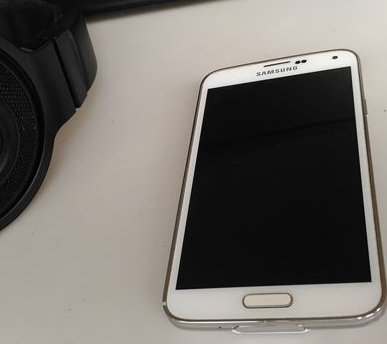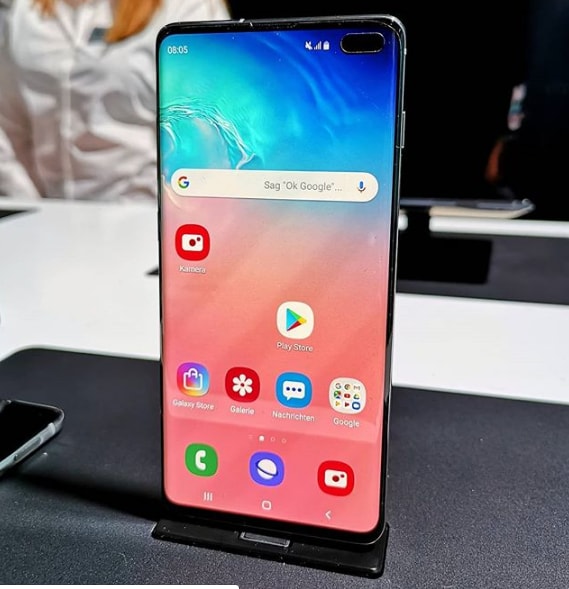When it comes to purchasing a new laptop, one of the most important decisions you’ll have to make is choosing the right screen size. The size of the laptop screen can have a significant impact on your overall user experience, so it’s essential to consider the pros and cons of different options before making a decision. In this article, we’ll explore the differences between 15-inch and 17-inch laptops, their advantages and disadvantages, and provide practical tips to help you choose the perfect laptop for your specific needs.
How Big Is a 17-Inch Laptop Compared to a 15-Inch Laptop?
The first thing that comes to mind when comparing 15-inch and 17-inch laptops is the size difference. While a mere two-inch discrepancy may not seem like a big deal, it’s important to note that larger laptops are often heavier as well. If you’re frequently on the move, traveling, or commuting, the weight of your laptop can become a crucial factor to consider. Carrying a heavy laptop around can be a burden, especially if you’re constantly on the go.
If portability is a top priority for you, a 15-inch laptop may be the better choice. These laptops are generally smaller and lighter, making them more convenient for travel. On the other hand, if you primarily use your laptop at home or in an office setting where portability is less of a concern, a 17-inch laptop might be a viable option. However, keep in mind that the larger size of a 17-inch laptop can make it cumbersome even for home use.
Ultimately, the decision between a 15-inch and 17-inch laptop comes down to personal preference and how you plan to use your device. Some individuals may find the larger screen of a 17-inch laptop more enjoyable, while others may prefer the compactness and ease of transport offered by a 15-inch model.
Is 17 Inches Too Big for a Laptop?
The question of whether 17 inches is too big for a laptop is subjective and depends on your specific needs and usage patterns. For individuals who frequently travel with their laptops, the larger size of a 17-inch device may be considered too big. The added weight and bulkiness can make it impractical to carry around, especially for extended periods.
Moreover, those who rely on using their laptops on their laps while working may also find 17-inch laptops too big for comfortable use. The larger size can make it challenging to balance the laptop on your lap, potentially leading to discomfort and strain. In such cases, a 15-inch laptop may offer a more ergonomic and portable solution.
It’s important to note that standard laptops typically range from 14 to 16 inches in screen size. If you’re accustomed to using a smaller laptop, such as one with a 14-inch screen, transitioning to a 17-inch laptop may feel overwhelming. The adjustment can be particularly challenging for individuals who have been using laptops with even smaller screens, such as 11-inch or 13-inch devices. In such instances, opting for a 15-inch laptop may be a more suitable choice, providing a balance between screen real estate and portability.
Ultimately, the perception of whether 17 inches is too big for a laptop varies from person to person. While some may find the larger screen size inconvenient, others may appreciate the wider viewing angle and enhanced visual experience offered by a 17-inch laptop.
Does a 17-Inch Laptop Have Better Cooling?
One advantage that 17-inch laptops often have over their smaller counterparts is the potential for better cooling. Due to their larger chassis size, 17-inch laptops generally have more space to accommodate additional cooling mechanisms, such as an extra cooling fan. The increased cooling capacity helps dissipate heat more effectively, ensuring optimal performance and preventing overheating issues.
However, it’s crucial to note that not all 17-inch laptops automatically have superior cooling systems compared to their 15-inch counterparts. The cooling capabilities of a laptop are determined by various factors, including the specific design and engineering of the device. It’s essential to carefully read the specifications of a laptop before making a purchase. Simply assuming that a laptop will have better cooling solely based on its size can lead to disappointment.
Both 15-inch and 17-inch laptops tend to have better cooling than smaller-sized devices. The compact nature of smaller laptops often results in tightly packed components, which can lead to increased heat buildup and potential overheating. If you plan to run intensive programs or engage in gaming activities that may put a strain on your laptop, it’s advisable to invest in additional cooling solutions like a cooling pad or seek out laptops with robust cooling systems.
15-Inch vs. 17-Inch Laptop Screen for General Personal Use
When it comes to choosing between a 15-inch and 17-inch laptop for general personal use, several factors should be taken into account. Defining “personal use” is crucial before diving into the decision-making process. Personal use can encompass activities such as browsing the internet, streaming videos, playing light games, checking emails, and more. While these tasks may not require a high-performance laptop, screen size remains an important consideration.
One of the key advantages of 15-inch laptops is their portability. These laptops are smaller and lighter, making them easier to carry around, especially for individuals who frequently use their devices outside of their homes. If you find yourself on the road often or enjoy working in various locations, a 15-inch laptop may be the more practical choice.
On the other hand, if you primarily use your laptop within the confines of your home, a 17-inch laptop can provide a superior viewing experience. The larger screen size allows for a wider viewing angle, making activities such as watching TV shows and movies more enjoyable. Additionally, the extra screen real estate on a 17-inch laptop makes multitasking easier, allowing you to switch between tabs and applications seamlessly.
While the appearance of a laptop is undoubtedly important, other factors should also influence your decision. Consider the following aspects when selecting a laptop for general personal use:
Processor
Since you’re purchasing a laptop for personal use, you typically won’t require an exceptionally powerful processor. Opting for an average processor that meets your needs should suffice, as most day-to-day tasks don’t demand intensive computational power.
Graphics
The choice of graphics depends on the games and programs you plan to use. If you don’t intend to engage in graphically demanding activities, a regular graphics card should be adequate for your personal use.
RAM
For general personal use, a laptop with 6-8 GB of RAM is generally recommended. This amount of memory allows for smooth multitasking and ensures your device can handle everyday applications and software without significant performance issues.
Battery
Consider your usage patterns and whether you frequently use your laptop outside of your home. If you’re frequently on the move and rely on your laptop’s battery power, it’s advisable to choose a laptop with a powerful battery that can support extended use.
Audio
Sound quality may be important to individuals who use their laptops for streaming movies and TV shows. If you enjoy immersive audio experiences or frequently rely on your laptop’s speakers, consider devices with excellent audio capabilities. However, keep in mind that external speakers can often provide better sound quality than built-in laptop speakers.
Price
Set a specific budget for your laptop purchase and explore models that offer the best value for your money. While laptops for personal use don’t typically require significant financial investments, it’s crucial to consider the specific characteristics and features you desire within your budget range.
By taking these factors into account, you can make an informed decision when choosing between a 15-inch and 17-inch laptop for general personal use. Consider your lifestyle, usage patterns, and personal preferences to find the perfect balance between portability and screen size.
15-Inch vs. 17-Inch Laptop Screen for General Business Use
Selecting the appropriate laptop screen size for general business use depends on several factors, including the nature of your profession and your specific work requirements. Different occupations may benefit from different laptop sizes, so it’s important to consider your specific line of business when making a decision.
Professionals in fields such as graphic design, video editing, engineering, and finance often require a larger screen size to effectively view and manipulate complex visual elements or datasets. For these professionals, a 17-inch laptop can provide a more immersive and productive working experience. The additional screen real estate allows for more efficient multitasking, reducing the need to constantly switch between applications or scroll within documents.
Many individuals find that larger screens help them maintain focus by eliminating the need for constant rearrangement of windows and applications. If you frequently work with multiple windows open simultaneously, a 17-inch laptop can provide a more comfortable and streamlined workflow.
However, it’s important to note that larger laptops are typically bulkier and less portable than their smaller counterparts. If you commute to work or frequently travel for business purposes, a 15-inch laptop may be a more suitable option. Despite their smaller size, modern 15-inch laptops can still offer powerful performance and meet the demands of most business applications.
When choosing a laptop for general business use, consider the following factors in addition to screen size:
Processor
The processor you choose should align with the tasks you’ll be performing on your laptop. For general business use, an average or above-average processor should be sufficient. Aim for the latest generation of Intel Core processors or their AMD equivalents to ensure optimal performance.
Graphics
The choice of graphics depends on the specific software applications you use in your line of business. More demanding programs, such as CAD software or video editing suites, may require more powerful graphics capabilities. Additionally, consider models that feature a solid-state drive (SSD) instead of a traditional hard disk drive (HDD) for faster data access and improved overall performance.
RAM
For general business use, it’s advisable to select a laptop with a minimum of 8 GB of RAM. This amount of memory allows for smooth multitasking and ensures your laptop can handle the demands of business applications without significant performance degradation.
Battery
Consider your work environment and whether you frequently require your laptop to function away from a power source. If you often find yourself working remotely or traveling for business, prioritize laptops with high battery performance. On the other hand, if you primarily keep your laptop in the office and have easy access to power outlets, battery life may be less of a concern.
Price
Consider your budget and explore laptop models that offer the best combination of features and value for your specific business needs. Consult with your employer if they have a specific budget allocation for your laptop purchase. If you’re a business owner, set a budget that aligns with your requirements and explore models within that range.
Cooling
If you plan to run multiple resource-intensive applications or perform tasks that require sustained high performance, pay attention to the laptop’s cooling system. Smaller laptops often have limited cooling capabilities, which can lead to overheating and subsequent performance throttling. Opt for laptops with robust cooling systems to ensure optimal performance and longevity.
By considering these factors alongside screen size, you can make an informed decision when selecting a laptop for general business use. Evaluate your specific line of work, prioritize your needs, and strike a balance between portability, screen real estate, and overall performance.
15-Inch vs. 17-Inch Laptop Screen for Gaming
For gamers, the size of the laptop screen is a crucial consideration. The screen size not only affects the overall gaming experience but also impacts factors such as immersion, visibility, and convenience. When deciding between a 15-inch and 17-inch laptop for gaming, there are several factors to consider.
Many gamers prefer larger screens for a more immersive gaming experience. A 17-inch laptop screen offers a wider field of view, allowing you to better appreciate the visual details within games. Additionally, a larger screen provides enhanced focus, enabling you to spot enemies or objects more easily.
Contrary to popular belief, larger laptops often come at a lower price point compared to their smaller counterparts. If budget is a concern, opting for a 17-inch laptop may provide better value for your money. However, it’s important to note that gaming laptops can span a wide range of prices, so be sure to research models within your budget that meet your specific gaming requirements.
One of the potential advantages of a 17-inch laptop for gaming is better cooling. The larger chassis of these laptops allows for more efficient heat dissipation, preventing overheating and ensuring optimal performance. Gamers who engage in more demanding titles or play for extended periods may benefit from the improved cooling capabilities of a 17-inch laptop.
However, if you frequently travel or prioritize portability, a 15-inch laptop may be a more convenient choice. These laptops tend to be lighter and more compact, making them easier to carry around. While a smaller screen may not provide the same level of immersion as a 17-inch display, many gamers set up dedicated gaming stations at home, making convenience and portability less critical.
When selecting a laptop for gaming, the screen size should be considered alongside the following factors:
Processor
Demanding games require a powerful processor to ensure smooth gameplay and optimal performance. Aim for a quad-core processor as a minimum requirement, but consider a hexa-core or higher if you plan to play graphically intensive games.
Graphics
The choice of graphics depends on the specific games you intend to play. If you’re not planning to play highly demanding first-person shooter (FPS) games, a regular graphics card should suffice. However, if you’re an avid gamer who enjoys the latest AAA titles, consider laptops with more powerful graphics capabilities.
RAM
For gaming laptops, 8 GB of RAM is typically the minimum requirement. However, it’s advisable to opt for 16 GB or more to ensure smooth gameplay and avoid potential glitches or lags.
Cooling
Gaming laptops are known for their potential to generate significant heat during extended gaming sessions. To prevent overheating, look for laptops with high-performing cooling systems that can dissipate heat effectively.
Price
Gaming laptops can vary significantly in price, depending on their specifications and features. Set a budget and explore models within your price range that offer the best combination of performance, graphics, and cooling capabilities.
When choosing between a 15-inch and 17-inch laptop for gaming, consider your specific gaming preferences, usage patterns, and portability requirements. While a larger screen can enhance your gaming experience, a smaller laptop may offer greater convenience and ease of transport.
15-Inch vs. 17-Inch Laptop Screen for Programming
Programmers require efficient and powerful laptops that can handle the demands of their work. When deciding between a 15-inch and 17-inch laptop for programming, there are several factors to consider, and both options have their advantages and disadvantages.
For programmers who are frequently on the move, switch between multiple locations, or travel extensively, a 15-inch laptop may be the better choice. The smaller size and lighter weight of these laptops make them more portable and convenient for individuals constantly on the go. If portability is a top priority, a 15-inch laptop can provide the necessary balance between performance and ease of transport.
However, 15-inch laptops do have their drawbacks. The smaller screen size may require more scrolling and window management, potentially leading to decreased productivity. Some programmers prefer working on larger screens to view their entire code or data without the need for excessive scrolling. Additionally, smaller laptops can be more prone to overheating, especially when running resource-intensive programs or developing complex software.
On the other hand, 17-inch laptops offer a larger screen size, providing ample space to work without the need for constant scrolling or resizing windows. The increased screen real estate allows for a wider viewing angle, which can enhance focus and productivity. However, the significant disadvantage of 17-inch laptops is their reduced portability. Carrying a laptop that weighs six pounds or more, along with additional accessories such as a charger or mouse, can become burdensome.
Ultimately, the decision between a 15-inch and 17-inch laptop for programming depends on your personal preferences and working conditions. Both sizes can offer excellent performance, and the determining factor is often portability. Consider the following factors when selecting a laptop for programming:
Processor
The type of processor you’ll need depends on the nature of your programming work. If you’re developing graphically demanding games or running resource-intensive simulations, opt for a high-performing processor such as an Intel Core i7.
Graphics
For game developers or programmers working with graphics-intensive applications, a laptop with a powerful graphics processing unit (GPU) is essential. However, for most programming tasks, a regular GPU should suffice.
RAM
The amount of RAM you’ll need depends on the specific programming tasks and software you use. Web developers may require a minimum of 4 GB of RAM, while application or software developers often benefit from 8 GB or more. Game developers, who typically work with complex game engines, may require 16 GB of RAM or higher.
Cooling
Given the nature of programming work, it’s crucial to select a laptop with an effective cooling system. Running multiple resource-intensive programs simultaneously can significantly increase heat generation, leading to reduced performance and potential damage to components. Look for laptops with robust cooling mechanisms to ensure optimal performance and longevity.
Price
Laptops for programming can vary in price based on their manufacturer, size, and specifications. Set a budget and explore models that offer the best value for your specific programming requirements.
When choosing between a 15-inch and 17-inch laptop for programming, consider your working conditions, portability needs, and screen size preferences. Both options can deliver excellent performance, and the ultimate decision should be based on your specific requirements and priorities.
Conclusion
Choosing the right laptop screen size is an important decision that can significantly impact your overall user experience. Whether you opt for a 15-inch or 17-inch laptop, it’s crucial to consider your specific needs and usage patterns. For individuals who prioritize portability, a 15-inch laptop offers a more convenient and lightweight solution. On the other hand, a 17-inch laptop provides a larger screen size, enhancing visual immersion and productivity.
When selecting a laptop, consider factors such as processor performance, graphics capabilities, RAM, cooling systems, battery life, and price. These factors, combined with your personal preferences and usage patterns, will guide you in making an informed decision.
Remember that the laptop screen size is just one aspect of the overall laptop experience. Other factors, such as the quality of the keyboard, trackpad, build quality, and connectivity options, should also be considered. Take the time to research and compare different models, read reviews, and consider your specific needs to ensure you find the perfect laptop that meets all your requirements.
By carefully evaluating your needs and prioritizing the features that matter most to you, you can confidently choose between a 15-inch and 17-inch laptop, setting yourself up for a productive and enjoyable computing experience.






